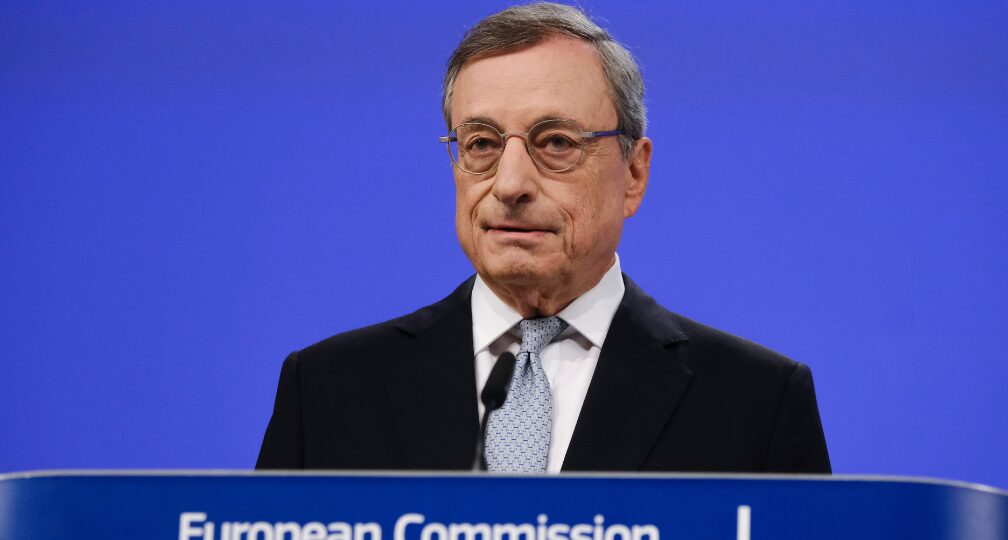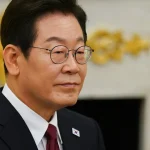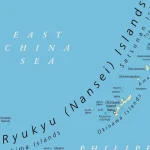IOG Economic Intelligence Report (Vol. 3 No. 20)

The latest regulatory developments on economic security & geoeconomics
By Paul Nadeau, Visiting Research Fellow, Institute of Geoeconomics (IOG)
U.S. Bans Software and Hardware from China in EVs and Autonomous Vehicles: The U.S. Commerce Department proposed a prohibition on software produced in China from autonomous and electric vehicles in the United States aimed at securing the supply chain of autonomous and electric vehicles. The proposal is the latest step in U.S. efforts to block EVs and components from China. The Commerce Department plans to make the prohibitions, which cover certain Bluetooth, satellite and wireless features as well as highly autonomous vehicles, effective in the 2027 model year and the ban on hardware would take effect in January 2029 or the 2030 model year.
Japan’s New PM Names New Economy Team: Shigeru Ishiba, new prime minister of Japan, announced his new cabinet on October 1. Among the positions relevant to geoeconomics, Yoji Muto was named minister of the Ministry of Economy, Trade, and Industry (METI), Kastunobu Kato was named Minister of Finance, and Minoru Kiuchi was named minister responsible for economic security. Muto is a close ally of Ishiba and in his first cabinet positions, Kiuchi is a former state minister for foreign affairs, while Kato was close to former Prime Minister Shinzo Abe and a proponent of Abenomics, who previously served as Minister of Health, Labor, and Welfare, and as Chief Cabinet Secretary under former Prime Minister Yoshihide Suga.
U.S. Dockworkers Strike Ends: A strike that began on October 1 by the International Longshoremen’s Association, representing 45,000 U.S. dockworkers on the East Coast and Gulf Coast of the United States, concluded after the union reached an agreement with their employer, United States Maritime Alliance (USMX). A tentative deal was reached on October 3 that will keep the ILA’s contract in force through January 15, 2025, and allow negotiations between the union and their employer to continue. The strike was the first work stoppage among dockworkers 1977 and threatened to block 36 U.S. ports from handling shipments, and JP Morgan estimated that the strike could have cost the economy $5 billion per day.
New Effort to De-Risk Critical Mineral Supply Chains: The Mineral Security Partnership, a U.S.-championed group of 14 countries and the European Union, announced the creation of a “finance network”. The new initiative aims to help support the creation of alternative supply chains in critical minerals by helping to financially sustain efforts to develop critical mineral sources beyond China as well as coordinating the work of governments, export credit agencies, development finance institutions, and public investment funds.
Nippon Steel Wins Arbitration Battle: An arbitration board has ruled that Nippon Steel’s proposed acquisition of U.S. Steel does not violate the United Steel Worker’s (USW) contract with U.S. Steel, finding that the proposed agreement satisfied each of the conditions of the successorship clause in its basic labor agreement between U.S. Steel and USW. The two parties agreed to bind themselves to the decision of the board, composed of panelists selected by Nippon Steel and USW, so USW will be unable to appeal the decision in court. Talks between Nippon Steel and USW broke off in the spring, and the USW has said that it remains opposed to the acquisition. The deal remains under review by the Committee on Foreign Investment in the United States (CFIUS), who is reviewing the national security implications of the transaction, while U.S. President Joe Biden and presidential candidates Kamala Harris and Donald Trump have all expressed opposition to the deal.
WTO to Investigate IRA: The World Trade Organization (WTO) accepted China’s request to form a dispute panel to review whether subsidies provided in the U.S. Inflation Reduction Act (IRA) unfairly favor domestic producers over foreign imports. China and the United States will now have twenty days to select panelists to consider the dispute, based on recommendations from the WTO Secretariat. Once the panel is formed, it is expected to give its initial confidential ruling in six months and its final report three months after that, though such proceedings can frequently take much longer.
China Probes Discrimination against Cotton from Xinjiang: China’s Ministry of Commerce announced it would investigate U.S. apparel maker PVH Corp., parent company of Tommy Hilfiger and Calvin Klein, for boycotting cotton from China’s Xinjiang region. PVH has been asked to submit a written statement on whether it adopted such measures within thirty days. If the investigation finds PVH discriminated against cotton from Xinjiang, the company would be added to an “unreliable entity list” that would subject PVH to fines, revocation of work permits for staff, or prevented from trading with China. China has already sanctioned five U.S. companies for arms sales to Taiwan, but the measure was mostly symbolic since those firms do not do business in China. PVH’s brands, however, have a large retail presence in China that would be impacted if China’s Ministry of Commerce finds the company responsible.
New U.S. Duties on Solar Panels: On October 2, the U.S. Commerce Department preliminary duties on solar imports from Southeast Asia, after an initial finding the equipment is benefiting from illegal government subsidies. The determination comes after U.S. solar panel makers brought a case arguing that these subsidies unfairly drive down the cost of products from these countries. The preliminary rates announced were lower than expected, though the final rates are expected to be higher.
U.S.-China Economic Working Group Meets: The U.S.-China Economic Working Group met in Beijing on September 19-20. The group was launched last year by U.S. Treasury Secretary Janet Yellen Vice Premier He Lifeng to help stabilize the economic relationship between the two countries and is co-led by Jay Shambaugh, undersecretary for International Affairs at the U.S. Treasury, and Liao Min, vice minister of Finance at China’s Ministry of Finance. At the September meeting, the group discussed overcapacity issues in China’s economy, Chinese firms’ support for Russia’s invasion of Ukraine, China’s nonmarket policies, debt financing, and domestic macroeconomic outlooks.
U.S. Announces New Efforts to Boost the Digital Economy: The Department of Commerce International Trade Administration (ITA) announced a series of initiatives to boost U.S. competitiveness in the digital economy. The initiatives specifically support building policy advocacy in international engagements, strengthening the ITA’s digital attaché staff through skill-building, and further support.
No Harm from Wine Bottles: The U.S. International Trade Commission (ITC) decided against imposing countervailing duties on glass wine bottles made in China. The U.S. Commerce Department found that China’s glass wine bottle manufacturers have benefited from state subsidies of 21 to 200 percent, but the ITC decided that U.S. producers were “not materially injured or threatened with material injury” by these imports.
Analysis: The Draghi report: EU competitiveness, industrial strategy, and ‘foreign economic policy’
By Andrew Capistrano, Visiting Research Fellow, Institute of Geoeconomics (IOG)
There is a specter haunting Europe—the specter of stagnation.
One major rationale for the EU common market (and later the Eurozone) was the idea that merging smaller national economies would create a bloc able to compete with the US, spur growth, and foster innovation. But despite the high hopes the EU has not only fallen further behind the US, in terms of manufacturing and advanced technology it has also been overtaken by China. Even Germany, the EU’s powerhouse, is expected to see its GDP shrink by 0.1 percent this year. Indeed, when it comes to the key metrics that will drive growth and productivity in the 21st century, the EU is finding it increasingly difficult to compete.
These trends point to “an existential challenge” for the EU, according to former Italian Prime Minister and European Central Bank President Mario Draghi. On September 9, he delivered this stark warning in his landmark 400-page report to the European Commission (EC), which makes the case that without growth it will be impossible to finance the EU’s digital and green transitions, provide for its own defense, or even maintain its social model. The report argues that Europe will eventually be “forced to choose”: it can either increase productivity, or give up on these essential policy goals.
Compounding the challenge, and raising the stakes, is the fact that for years the over-regulated EU has failed to increase its growth rates under more favorable international conditions. As Draghi points out, Europe grew complacent in an era of expanding world trade, cheap Russian energy, and low defense spending thanks to the US security umbrella. But this era appears to be ending. Therefore, he believes the only way for the EU to reset its trajectory in the current geopolitical and economic environment is for it to “radically change” and implement an unprecedented industrial strategy.
Draghi’s strategy has three goals. First, to close the “innovation gap” with the US and China, particularly in advanced technology, and find new growth engines less reliant on the multilateral trading system. Second, to lower energy prices and decarbonize, replacing the so-called ‘Green Deal’ with a coordinated effort to compete with China as a leader in sustainable technologies. And third, to strengthen economic security and revamp its defense industrial base, enabling the EU to operate in a world of greater geopolitical instability where “dependancies are becoming vulnerabilities”.
In this context, Draghi notes Europe’s China dilemma: greater reliance on Chinese technology may be the cheapest way to meet the EU’s climate targets, but China’s state-subsidized manufacturers also pose a threat to European ‘clean tech’ industries (such as wind turbines and electric vehicles). Moreover, while China relies on the EU to absorb its overcapacity, the EU is overly reliant on China for the critical raw materials it will need to facilitate any technological innovation. This makes the EU “vulnerable to coercion”, especially as other economies like the US attempt to “disentangle” themselves from China.
From a geoeconomic standpoint, the dilemma of EU dependencies leads to one of the report’s most interesting proposals. Draghi asserts that a vital instrument the EU lacks is a “foreign economic policy” or “statecraft” from the EC level. Such a policy would be essential to coordinate trade agreements, build stockpiles of critical raw materials, and form industrial partnerships to secure Europe’s supply chains. “Only together”, the report argues, “can we create the necessary market leverage to do all this”.
But the proposal for a “foreign economic policy” raises the question of whether Draghi’s ambitious industrial strategy can really solve the EU’s problems through greater European integration. Since the EU member states do not necessarily have the same foreign policy interests—nor the same economic interests—harnessing the EU’s market leverage to match the geoeconomic practices of the US or China appears unlikely in the short term.
Draghi recognizes this problem, identifying three obstacles for the success of his industrial strategy. The first two are well known: the EU’s inability to back up its common objectives with joint policy actions; and the waste of common resources by diluting Europe’s spending power across the different EU member states, sometimes at cross purposes. What is novel is his explicit mention of a third obstacle, the failure to coordinate an EU-wide industrial strategy in a way that can match the US and China. Both rivals are able to leverage their size and political cohesion to combine fiscal policy (subsidizing investments in technology and manufacturing) with trade policy (imposing tariffs in retaliation for non-market practices) as well as foreign policy (securing supply chains and access to markets or resources).
Still, the report makes it clear that the entire strategy rests on EU reform—the fundamental prerequisite for a common “foreign economic policy”. In Draghi’s view, true reform would require fully implementing the single market, aligning trade and industrial policies with a new “competitiveness policy”, and financing a massive investment in advanced technology with “common funding and common assets”.
This raises what has so far been the most controversial issue with the Draghi report. Only one financing vehicle was proposed: building on the experience of the Next Generation EU (NGEU) pandemic recovery package, the first time the EU borrowed from capital markets as a bloc to finance expenditures across its member states. Under NGEU, the EC was empowered to issue debt at a level comparable to the EU’s biggest national economies, borrowing up to €150 billion per year for five years. Draghi’s proposal was to leverage a further €750-800 billion per year to pay for the strategy, thereby raising the investment share of EU GDP by 5 percent annually.
Such an unprecedented amount split the EU member states. On the one hand, Germany and the Netherlands were dissatisfied with NGEU, so it was not a shock that they balked at funding an EU industrial strategy through a similar but expanded mechanism. On the other hand, net beneficiaries such as France and Spain supported Draghi’s financing proposal. (It is worth noting that in some respects, the report’s concerns about European competitiveness reflect French President Emmanuel Macron’s April 2024 Sorbonne speech on the future of the EU, common defense spending, and an economic strategy to rival the US and China.)
Draghi was forced to backtrack, and recently called NGEU-style debt financing “not an essential ingredient” for the overall ideas presented in the report. Although the private sector could not finance massive investments without public sector support, Draghi argued that preexisting policy objectives like implementing the Capital Markets Union, coupled with the expected increase in productivity from initial investments in the strategy, would open up fiscal space for the EC to provide financing. But this may not be concrete enough economic reasoning to sway his critics.
Yet regardless of the critiques, the Draghi report is significant for attempting to address a critical threat to Europe’s economic future. He is correct that without innovation and growth, the EU will not be able to compete with the US and China, or defend itself in a European war. But Europe needed Draghi’s industrial strategy ten years ago, when it was implementing austerity policies in the aftermath of the Great Recession; by the time the EU reforms itself to unite behind a common industrial policy, much less a “foreign economic policy”, it may be too late to reverse the decline.
The great irony is that the same factor that gives the EU the possibility of competing with the US and China—the creation of a common market out of smaller national economies—may now hinder joint action and prevent it from realizing its potential.
(Photo Credit: Shutterstock)
Disclaimer: The views expressed in this IOG Economic Intelligence Report do not necessarily reflect those of the API, the Institute of Geoeconomics (IOG) or any other organizations to which the author belongs.
API/IOG English Newsletter
Edited by Paul Nadeau, the newsletter will monthly keep up to date on geoeconomic agenda, IOG Intelligencce report, geoeconomics briefings, IOG geoeconomic insights, new publications, events, research activities, media coverage, and more.


Visiting Research Fellow
Paul Nadeau is an adjunct assistant professor at Temple University's Japan campus, co-founder & editor of Tokyo Review, and an adjunct fellow with the Scholl Chair in International Business at the Center for Strategic and International Studies (CSIS). He was previously a private secretary with the Japanese Diet and as a member of the foreign affairs and trade staff of Senator Olympia Snowe. He holds a B.A. from the George Washington University, an M.A. in law and diplomacy from the Fletcher School at Tufts University, and a PhD from the University of Tokyo's Graduate School of Public Policy. His research focuses on the intersection of domestic and international politics, with specific focuses on political partisanship and international trade policy. His commentary has appeared on BBC News, New York Times, Nikkei Asian Review, Japan Times, and more.
View Profile-
 China, Rare Earths and ‘Weaponized Interdependence’2025.12.23
China, Rare Earths and ‘Weaponized Interdependence’2025.12.23 -
 Are Firms Ready for Economic Security? Insights from Japan and the Netherlands2025.12.22
Are Firms Ready for Economic Security? Insights from Japan and the Netherlands2025.12.22 -
 Is China Guardian of the ‘Postwar International Order’?2025.12.17
Is China Guardian of the ‘Postwar International Order’?2025.12.17 -
 Japan-India Defense in a Fragmenting Indo-Pacific2025.12.10
Japan-India Defense in a Fragmenting Indo-Pacific2025.12.10 -
 The “Economic Security is National Security” Strategy2025.12.09
The “Economic Security is National Security” Strategy2025.12.09
 Event Report: The Trump Tariffs and Their Impact on the Japanese Economy2025.11.25
Event Report: The Trump Tariffs and Their Impact on the Japanese Economy2025.11.25 The “Economic Security is National Security” Strategy2025.12.09
The “Economic Security is National Security” Strategy2025.12.09 The Real Significance of Trump’s Asia Trip2025.11.14
The Real Significance of Trump’s Asia Trip2025.11.14 The long road to a South Korea-U.S. trade deal2025.11.26
The long road to a South Korea-U.S. trade deal2025.11.26 The Tyranny of Geography: Okinawa in the era of great power competition2024.02.09
The Tyranny of Geography: Okinawa in the era of great power competition2024.02.09












